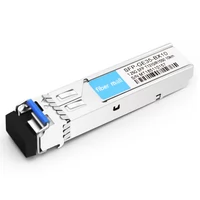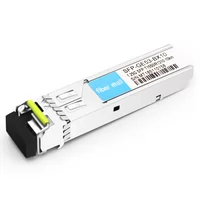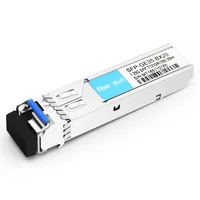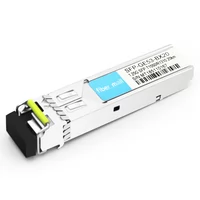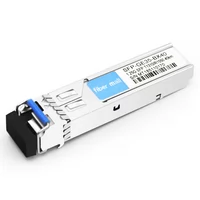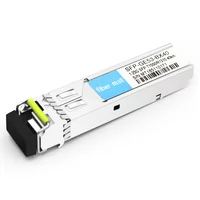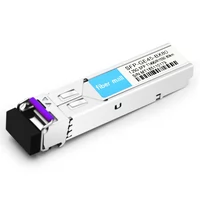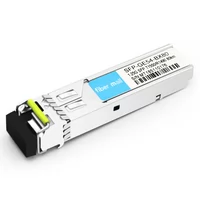In recent years, the development of PoE power supply technology has been gaining momentum. With a series of advantages such as simplifying the installation and deployment of power-using devices, energy saving, and security, PoE power supply has become a new favorite for scenarios such as wireless coverage, security monitoring, and smart grid.
Question 1: What is PoE technology?
PoE (Power Over Ethernet) refers to a technology that provides DC power to IP-based terminals (such as IP phones, wireless LAN access point APs, network cameras, etc.) while transmitting data to such devices without any changes to the existing Ethernet Cat.5 cabling infrastructure. PoE technology can ensure the safety of existing structured wiring while ensuring the normal operation of existing networks and minimizing costs. A complete PoE system consists of a PSE (Power Sourcing Equipment) and a PD (Powered Device).
Power Sourcing Equipment (PSE): Ethernet switches, routers, hubs, or other network switching devices that support POE functionality.
Powered Device (PD): In the monitoring system is mainly the network camera (IPC).
Question 2: How to choose PoE switch?
- How much power needs: The PoE switch adopts different standards, and the output power will be different. For example, IEEE802.3af with a maximum of no more than 15.4W can supply power to devices with a maximum power consumption of no more than 12.95W due to the loss of transmission line material. The PoE switch following IEEE802.3at standard can power devices with maximum power consumption not exceeding 25W.
- The maximum number of devices that can be powered: An essential indicator of a PoE switch is the total power supplied by PoE. Under IEEE802.3af standard, if a 24-port PoE switch has a total PoE power supply of 370W, it can supply 24 ports (370/15.4=24). However, if it is calculated according to IEEE802.3at standard of maximum power supply of 30W for a single port, it can only supply power to 12 ports at most simultaneously (370/30= 12).
- the number of required interfaces, whether with fiber optic ports, with or without network management, rate (10/100/1000M).
Question 3: Is the PoE power supply stable?
From a technical point of view, PoE technology has been developed for many years and is now at a very mature stage. The standard PoE power supply is stable and secure. But because the current monitoring market is forced to cost pressure, the choice of PoE switch or wire quality is too low, or the solution design is unreasonable, the power supply distance is not arranged, or connected to too many high-power devices appears power supply shortage (especially at night when the monitoring equipment is turned on heating mode). So engineers generally have the PoE power supply is not a stable point of view.
Different from common network cabling, network monitoring projects require large data transmission volumes, high power, and 24/7 uninterrupted operation. High-quality PoE devices and cables are used to ensure the stability of the entire system.
Question 4: Do PoE switches save energy?
One of the well-known advantages of PoE power is that it saves energy, but in what way? Take the MS series standard PoE switch as an example.
The PoE switches will adjust the power according to the power supply devices. For example, when an infrared dome when the temperature is low, turn on the heating function power reached 30Wmax, and the normal power is 24W max, the PoE switch will automatically adjust the power supply according to the dome operating conditions.
MS series standard PoE switch can set PoE power supply cycle, in the holiday and night time and other times can automatically stop power supply to the terminal of the specified port, not only saving energy but also setting flexible use in certain scenarios.
MS series standard PoE switches monitor the status of all ports in real-time. If the port status is down, the system will automatically stop powering the port and enter energy-saving mode, which not only saves energy but also ensures the stable operation of normal equipment.
Question 5: Is more power for PoE switches better?
Due to the emergence of high-power devices such as HD dome cameras and real-time video phones, network equipment manufacturers are scrambling to develop PoE switches with higher total power. However, many products only pursue the increase of total power, ignoring the relationship between power and the number of ports, which inevitably causes the overall cost of the device to increase while the power is high, resulting in the user choosing a PoE switch with low practicality and low-cost performance.
Therefore, in the actual deployment, you should first determine the power and number of PD devices and choose the most suitable PoE switch.
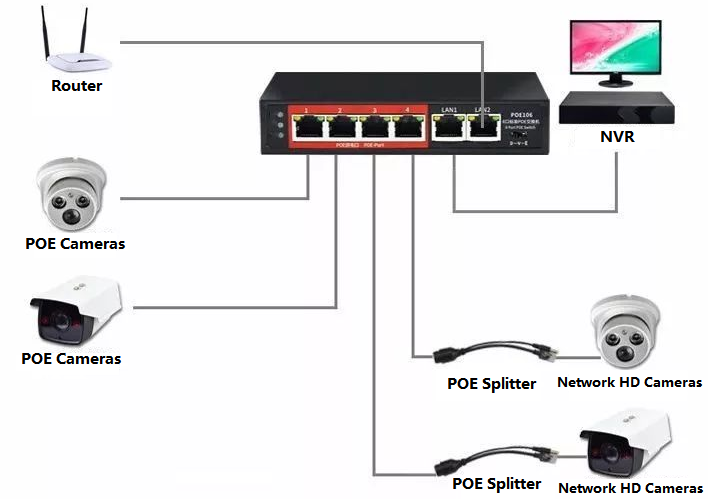
Question 6: The advantages of PoE power supply solution
- Simplified cabling and reduced labor costs: A network cable transmits data and power at the same time. PoE eliminates the need for expensive power supplies and the time required to install power supplies.
- Safety and convenience: The PoE power supply device supplies power only to the devices that need to be powered. The Ethernet cable has voltage only when the devices that need to be powered are connected, thereby eliminating the risk of circuit leakage. Users can safely mix existing devices and PoE devices on the network. These devices can coexist with existing Ethernet cables.
- Easy remote management: Like data transmission, PoE can use a Simple Network Management Protocol (SNMP) to monitor and control the device. This feature can provide functions such as shutting down at night, remote restarting, etc.
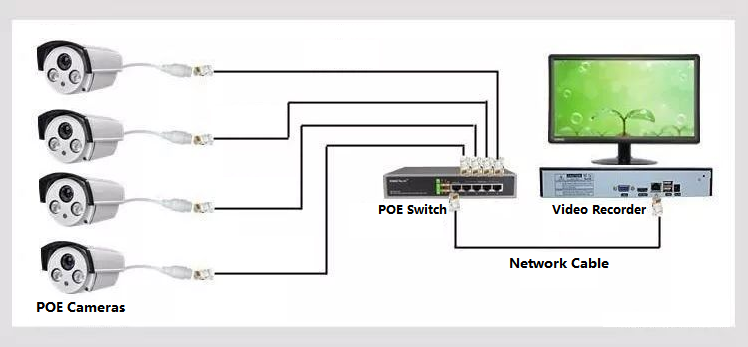
Question 7: What are the risks or disadvantages of PoE power supply technology in engineering applications?
- Insufficient power, the receiving end can’t carry: 802.3af standard (PoE) output power is less than 15.4W, which is sufficient for general IPCs, but for high-power front-end devices such as dome cameras, the output power can’t meet the requirements.
- Concentrated risks: generally speaking, a PoE switch will simultaneously power multiple front-end IPC, the switch PoE power supply module failure will lead to all the cameras can not work, and the risk is too centralized.
- High equipment and maintenance costs: Compared to other power supply modes, PoE power supplies increase the after-sales maintenance workload. From the perspective of security and stability, independent power supplies provide the best stability and security.
Question 8: What is the safe transmission distance of the PoE power supply? What are the suggestions for choosing network cables?
The safe transmission distance of the PoE power supply is 100 meters, and it is recommended to use copper UTP cable.
It is possible to transmit DC power very far with standard Ethernet cables, so why is the transmission distance limited to 100 meters?
The fact is that the maximum transmission distance of a PoE switch depends on the data transmission distance. When the transmission distance exceeds 100m, data delay and packet loss may occur. Therefore, the transmission distance in the actual construction process is better not more than 100 meters.
However, there are some PoE switches that can transmit up to 250 meters, which is sufficient for long-distance power supply. It is also believed that with the development of PoE power supply technology soon, the transmission distance will be extended further.
Question 9: Whether to buy a non-standard or standard PoE switch?
This mainly depends on the power supply AP, IP Camera support 48V, 24V, or 12V input? If it is 48V, it says that it supports IEEE802.3AT or AF power supply standard, which is generally standard. If a 24V or 12V power supply device is used, you need to find a 12/24V non-standard power supply switch or buy a standard one. In this case, you need to buy a PD power separator to convert the PoE into a DC power supply and network cable data.
Why is it better to buy the standard one, because there are many hidden problems?
The non-standard PoE switch works as a switching power supply. Without PoE chip, the AC voltage of 220V is reduced to 48V DC through a transformer. The voltage and current continuously output at each RJ45 port without detecting the lower end of the device. Such a device cannot be directly connected to other network devices. Direct connection may cause two pairs of network cables in the PoE power supply, and the positive and negative terminals may be connected to a short circuit. This may cause damage to the port or smoke and fire.
To sum up, a standard PoE switch has a PoE control chip inside, which checks before the power supply. After the device is connected, the PoE power supply sends a signal to the network to check whether the terminal on the network supports the PD device powered by PoE. The non-standard PoE device is a strong power supply network cable power supply device. The device is powered on once the device is powered on and there is no detection procedure. The device is powered on regardless of whether the terminal is a PoE device.
Question 10: How to distinguish between standard PoE and non-standard PoE?
- Check the specification parameters. If the output is 12-24V, it must be non-standard.
For example, the following figure shows an 8-port and 6-port PoE switch. But look at the specifications, it says, 15V1A output, 19V1A ultra-long range output. According to the IEEE802.3AT /AF protocol, the output voltage range of the standard PoE port is between 44 and 57V, so it is obvious that this is not the standard. It is not surprising that the manufacturer has eliminated the PoE chip in order to save costs. But if the port outputs 48V, must it be a standard PoE switch? Not necessarily.
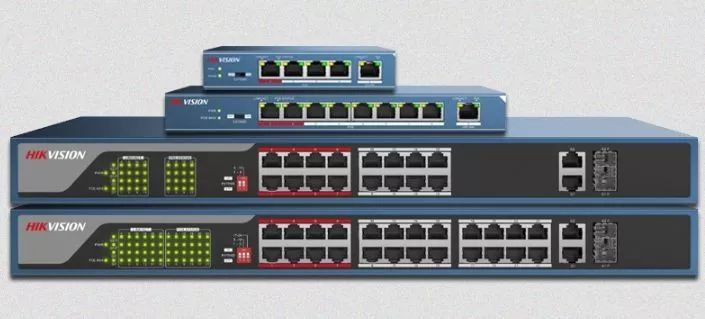
- Use a multimeter to detect the corresponding line sequence of the port or network cable, and test whether the voltage is always output on the network cable.
Start the device and set the multimeter to the voltage measurement gear. Use the two pens of the multimeter to tap the PSE device power supply pin (usually 1/2, 3/6 or 4/5, 7/8 of the RJ45 port). If the equipment with 48V or other voltage values (12V, 24V, etc.) and stable output is measured, it is a non-standard product. Because in this process, PSE does not test the powered equipment (the multimeter) and directly uses 48V or other voltage values to supply power.
Conversely, if the voltage is not measured and the hands of the multimeter bounce between 2 and 10 V, it is a standard PoE. because at this stage, the PSE is doing detection on the PD side (the multimeter), and the multimeter is not a legitimate PD, the PSE will not supply power and no stable voltage is generated.
If it is a standard PoE power supply device, it will generate a small voltage when supplying power to the following devices, first check whether the following devices are connected. Then provide the corresponding voltage and current according to the power required by the following equipment.
The reliability of engineering products is important. If the reliability is low, the reliability of the whole system is even lower. This not only affects the company’s business development, but also adds great system maintenance costs to the engineer, and some even cannot be accepted, causing serious losses.
Question 11: Does a standard PoE switch have high reliability and stability?
The reliability of the equipment is closely related to the operating environment. Commercial switches are generally used indoors, while industrial switches are generally used outdoors. They also have different requirements for reliability. The reliability of a commercial PoE switch consists of two parts: the switching part (PCB, switch chip +PoE chip, and other electronic materials), and the built-in and external power supplies for the PoE. Because the power supply is responsible for the entire power supply, its reliability is the most important. Here we also briefly answer the following to judge the power reliability of PoE switches with some relatively simple solutions:
- Check whether the 3C certification and manufacturer information are displayed on the power supply
Without 3C certification and without the manufacturer’s power supply, it can be concluded immediately that the quality is impossible to be good, and it is not possible to supply power to the following equipment for 24 hours without interruption for a long time.
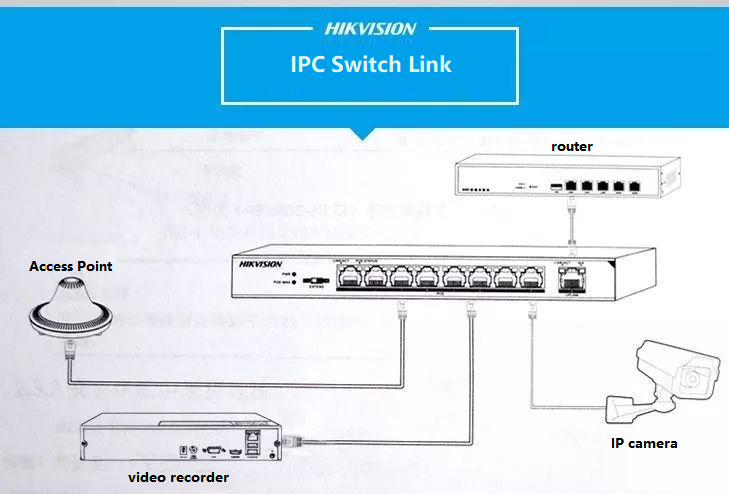
- Test the power supply surface temperature
The actual test is stable at full load, and if the case is stable over 50 degrees, there is a great risk.
Power supplies are designed with a threshold value, after exceeding the power supply will restart. In long-term overload operations, the life of the power supply will become shorter, resulting in a continuous reduction in reliability.
The manufacturer uses such a power supply because the power supply is a major part of the cost of PoE switches. In order to save costs, manufacturers choose inferior power sources, completely ignoring the quality of products.
Question 12: How do I know how many APs and IP cameras a PoE-powered switch can carry?
For example, if a 5-port 100GbE 4-port PoE-powered switch has a maximum PoE output power of 57W, how many 300W pixel day and night dome IP cameras can be connected to it? Find the corresponding power consumption: 5W MAX(7W when switching ICR), ICR stands for infrared at night.
Maximum PoE output power/maximum camera consumption is used to obtain the maximum number of supported ports, 57W/7W, which is equal to 8. Since there are only 4 PoE power supply ports, only 4 are supported, and the others are similar.
The loss above the network cable is mainly current multiply the resistance of the cable, so the poorer the quality of the cable, the greater the loss. So we do this using the eight-core power supply, 51V output, increase voltage, and an eight-core parallel circuit shunt design. Reduce the current transmitted on the cable to reduce losses, while supporting more powered devices. Even if the poor quality of the network cable, can also support 250 meters of long-distance transmission and power supply, to solve the monitoring wiring, part of more than a hundred meters need to deploy extenders, optical fiber, and another costly wiring.
Question 13: How to choose a PoE switch for security monitoring and wireless coverage?
There are very many types of PoE switches, ranging from fast Ethernet to gigabit to full gigabit, as well as the differences between non-NMS and NMS, and the number of ports. To choose the right switch, you need to take comprehensive consideration. Take the project that requires HD monitoring as an example analysis.
Step 1: Select a standard PoE switch
Step 2: Select a fast Ethernet or Gigabit switch
In the actual scheme, the number of camera channels, camera resolution, bit rate, frame number, and other parameters should be selected comprehensively. Mainstream monitoring device vendors, such as Hikvision and UOB, provide professional bandwidth calculation tools. Users can use the tools to calculate the required bandwidth and select suitable PoE switches.
Step 3: Select af or at PoE switch
Select this parameter based on the monitoring device power. For example, if you use a well-known camera with a power of 12W max, you need to use an af standard switch. A high-definition dome power 30W max, this situation requires the use of at standard switches.
Step 4: Select the number of switch ports
PoE switches can be divided into 4 ports, 8 ports, 16 ports, and 24 ports based on the number of ports. The PoE switches can be integrated to monitor device power, quantity, location, switch power supply, and price.
Table of Contents
ToggleRelated Products:
-
 SFP-GE35-BX10 1000Base BX BIDI SFP TX1310nm/RX1550nm 10km LC SMF DDM Transceiver Module
$6.00
SFP-GE35-BX10 1000Base BX BIDI SFP TX1310nm/RX1550nm 10km LC SMF DDM Transceiver Module
$6.00
-
 SFP-GE53-BX10 1000Base BX BIDI SFP TX1550nm/RX1310nm 10km LC SMF DDM Transceiver Module
$9.00
SFP-GE53-BX10 1000Base BX BIDI SFP TX1550nm/RX1310nm 10km LC SMF DDM Transceiver Module
$9.00
-
 SFP-GE35-BX20 1000Base BX BIDI SFP TX1310nm/RX1550nm 20km LC SMF DDM Transceiver Module
$6.00
SFP-GE35-BX20 1000Base BX BIDI SFP TX1310nm/RX1550nm 20km LC SMF DDM Transceiver Module
$6.00
-
 SFP-GE53-BX20 1000Base BX BIDI SFP TX1550nm/RX1310nm 20km LC SMF DDM Transceiver Module
$9.00
SFP-GE53-BX20 1000Base BX BIDI SFP TX1550nm/RX1310nm 20km LC SMF DDM Transceiver Module
$9.00
-
 SFP-GE35-BX40 1000Base BX BIDI SFP TX1310nm/RX1550nm 40km LC SMF DDM Transceiver Module
$15.00
SFP-GE35-BX40 1000Base BX BIDI SFP TX1310nm/RX1550nm 40km LC SMF DDM Transceiver Module
$15.00
-
 SFP-GE53-BX40 1000Base BX BIDI SFP TX1550nm/RX1310nm 40km LC SMF DDM Transceiver Module
$15.00
SFP-GE53-BX40 1000Base BX BIDI SFP TX1550nm/RX1310nm 40km LC SMF DDM Transceiver Module
$15.00
-
 SFP-GE45-BX80 1000Base BX BIDI SFP TX1490nm/RX1550nm 80km LC SMF DDM Transceiver Module
$30.00
SFP-GE45-BX80 1000Base BX BIDI SFP TX1490nm/RX1550nm 80km LC SMF DDM Transceiver Module
$30.00
-
 SFP-GE54-BX80 1000Base BX BIDI SFP TX1550nm/RX1490nm 80km LC SMF DDM Transceiver Module
$30.00
SFP-GE54-BX80 1000Base BX BIDI SFP TX1550nm/RX1490nm 80km LC SMF DDM Transceiver Module
$30.00

